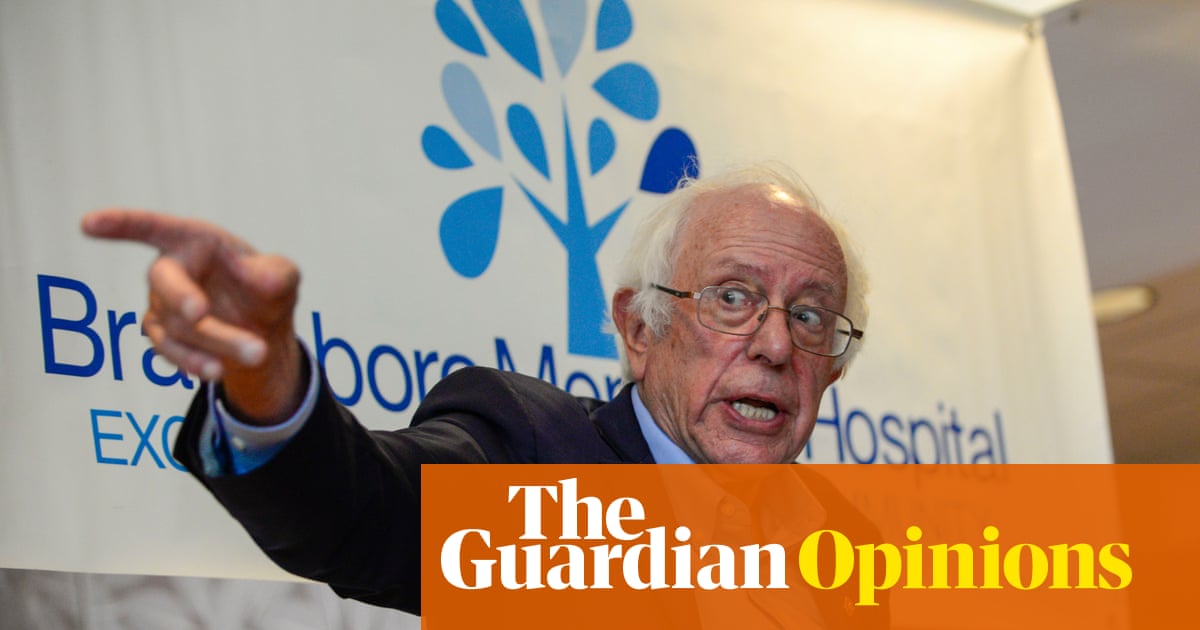Our primary healthcare system is a mess. We have a plan to fix it - The Guardian

The bad news is that the US healthcare system is broken and dysfunctional. We spend twice as much per capita as almost any other country, nearly $13,000 per year, while 85 million Americans remain uninsured or underinsured. In addition, our health outcomes are often worse. In terms of life expectancy, for example, we live far shorter lives than the people of many other industrialized nations.
The system is failing ordinary Americans. On the other hand, the insurance and drug companies that dominate it have sky-high profits and their CEOs receive exorbitant compensation packages. The thousands of lobbyists those companies have on Capitol Hill are also doing very well.
It's time for a change.
As disastrous as our overall healthcare system is, our primary care system is even worse. Tens of millions of Americans live in communities where they cannot find a doctor or dentist, even when they have insurance, while others have to wait months to get seen. Despite spending a huge amount of money on healthcare, the United States doesn't have enough doctors, dentists, nurses, mental health practitioners, pharmacists or home healthcare workers. And that workforce shortage is getting worse.
Most countries spend between 10% and 15% of their healthcare budgets on primary care. Canada spends 13%, Germany spends 15%, Spain spends 17% and Australia spends 18%. We spend less than 7%.
In other words, instead of investing in disease prevention and enabling people to gain easy and timely access to the medical care they need, we spend heavily on expensive hospital and tertiary care. Our "system" is there big time when people end up in the hospital. We just don't do much to keep them from going there.
Every major medical organization agrees that our investment in primary healthcare is woefully inadequate. They understand that focusing on disease prevention and providing Americans with a medical home will not only saves lives and ease human suffering, but save money. Providing primary care to all is not only good public policy, it is cost-effective.
The major backbone of our current primary care system, especially for low- and moderate-income Americans, is the Federally Qualified Community Health Center program. Today, 30 million men, women and children receive high-quality primary healthcare at community health centers in 14,000 neighborhoods located in every state in America. Many of these centers also provide dental care, mental health counseling and low-cost prescription drugs.
According to a recent study by an expert at the Kaiser Permanente School of Medicine, community health centers saved Medicare and Medicaid $25bn in 2021 alone.
In fact, research has shown that it is about $2,300 less expensive for a Medicaid patient to receive care from a community health center than at a private clinic and it is roughly $1,200 less expensive for a Medicare patient to receive care at a community health center than at an outpatient clinic.
At a time when millions of Americans have no option but to go to an emergency room for their basic healthcare needs, it turns out that an emergency room visit is about 10 times more expensive than going to a community health center.
One thing is certain. We cannot address the primary healthcare crisis unless we also address the major shortages that we have in our healthcare workforce. According to the most recent estimates, over the next decade our country faces a shortage of over 120,000 doctors – including a major shortage of primary care doctors.
The nursing shortage may even be worse. Over the next two years alone it is estimated that we will need between 200,000 and 450,000 more nurses.
We also have a shortage of some 100,000 dentists in America.
And, despite the very serious mental health crisis we are facing, there is a massive shortage of mental health service providers – psychiatrists, psychologists, social workers, counselors, addiction specialists and many more.
For many years members of Congress have talked about these crises. Now is the time to act. As chairman of the US Senate health, education, labor and pensions (Help) committee I am working hard to pass bipartisan legislation which will transform our primary healthcare system so that every American, no matter where they live or what their income might be, can get the care they need when they need it.
If we increased funding for primary care by $130bn over five years, through a combination of increased federal funding and the elimination of some of the enormous waste and bureaucracy in the current healthcare system, we could double the number of people using community health centers and come close to providing primary healthcare to every person in America.
Further, an investment of $40bn over five years could substantially increase the number of doctors, nurses, dentists and mental health care providers we desperately need.
Is this $170bn, five-year investment in our primary care system and healthcare workforce a lot of money?
Yes. It is. But let's be clear. This $34bn annual investment to improve our healthcare system would amount to less than half of the increase that Congress provided to the Pentagon last year alone.
In my view, healthcare is a human right. The legislation that I am proposing would go a long way towards accomplishing that goal.
Bernie Sanders is a US senator and chairman of the health, education, labor and pensions committee. He represents the state of Vermont, and is the longest-serving independent in the history of Congress
Comments
Post a Comment